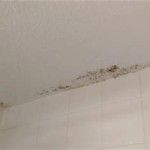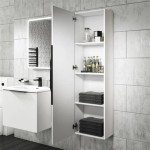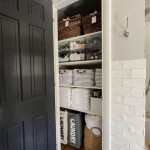No Water Pressure In Bathroom Sink
Losing water pressure in your bathroom sink is an inconvenience that can be difficult to repair. Sometimes, the problem is simple to fix. Other times, it can be a sign of a more serious problem. Here are some of the most common causes of low water pressure in a bathroom sink and how to fix them.
Clogged Faucet Aerator
A clogged faucet aerator is one of the most common causes of low water pressure in a bathroom sink. Aerators are small, mesh screens that are attached to the end of the faucet. They help to reduce water flow and create a more aerated stream of water. Over time, aerators can become clogged with mineral deposits and debris. This can restrict the flow of water and cause low water pressure.
To clean a clogged faucet aerator, remove it from the faucet and soak it in a vinegar solution for 30 minutes. You can also use a toothbrush to gently scrub away any mineral deposits or debris. Once the aerator is clean, reattach it to the faucet and test the water pressure.
Corroded Faucet
If you have an older faucet, it may be corroded. This can occur due to exposure to hard water or other elements. The corrosion can cause the inner workings of the faucet to become clogged or damaged, which can lead to low water pressure.
If you suspect that your faucet is corroded, you can try to remove the aerator and inspect the inside of the faucet. If you see any signs of corrosion, you will need to replace the faucet.
Faulty Water Supply Line
The water supply line is the pipe that connects your sink to the main water supply. If the water supply line is kinked or damaged, it can restrict the flow of water and cause low water pressure.
To check the water supply line, turn off the water supply to the sink. Then, inspect the line for any kinks or damage. If you find any damage, you will need to replace the water supply line.
Frozen Pipes
If you live in a cold climate, frozen pipes can be a cause of low water pressure in your bathroom sink. When pipes freeze, they can block the flow of water and cause low water pressure.
To prevent pipes from freezing, make sure that your home is properly insulated and that the temperature inside your home is above freezing. If you suspect that your pipes are frozen, you can try to thaw them by running hot water through the faucets.
High Water Demand
If you have multiple faucets or appliances running at the same time, it can put a strain on your water supply and cause low water pressure in your bathroom sink.
To avoid this problem, try to limit the number of faucets and appliances that you run at the same time. You may also want to consider installing a water pressure booster to increase the water pressure in your home.
Main Water Line Issues
If you have tried all of the above solutions and you are still experiencing low water pressure in your bathroom sink, it may be a problem with your main water line. The main water line is the pipe that connects your home to the city's water supply. If there is a leak or blockage in the main water line, it can restrict the flow of water and cause low water pressure.
To check the main water line, turn off the water supply to your home and then check the water pressure at an outdoor faucet. If the water pressure is low at the outdoor faucet, it is likely that there is a problem with the main water line. You will need to contact a plumber to have the main water line repaired or replaced.

Faucet Has Low Water Pressure After Repair Fix

4 Common Reasons Your Bathroom Water Pressure Is Low Reichelt Plumbing

4 Ways To Adjust Faucet Water Pressure Wikihow

Low Water Pressure In The House Causes And Solutions Forbes Home

How To Fix Low Water Pressure Boilers Showers And Sinks Checkatrade

Easy Fix For Low Water Pressure In Kitchen Sink Or Bathroom

How To Fix A Faucet Low Water Pressure

Ways To Boost Low Water Pressure In Your House Isley Plumbing

Plumbing Washbasin Tap Not Working Properly And No Water Pressure Refer Images Home Improvement Stack Exchange

No Water Coming Out Of The Tap How To Fix 10 Tips







